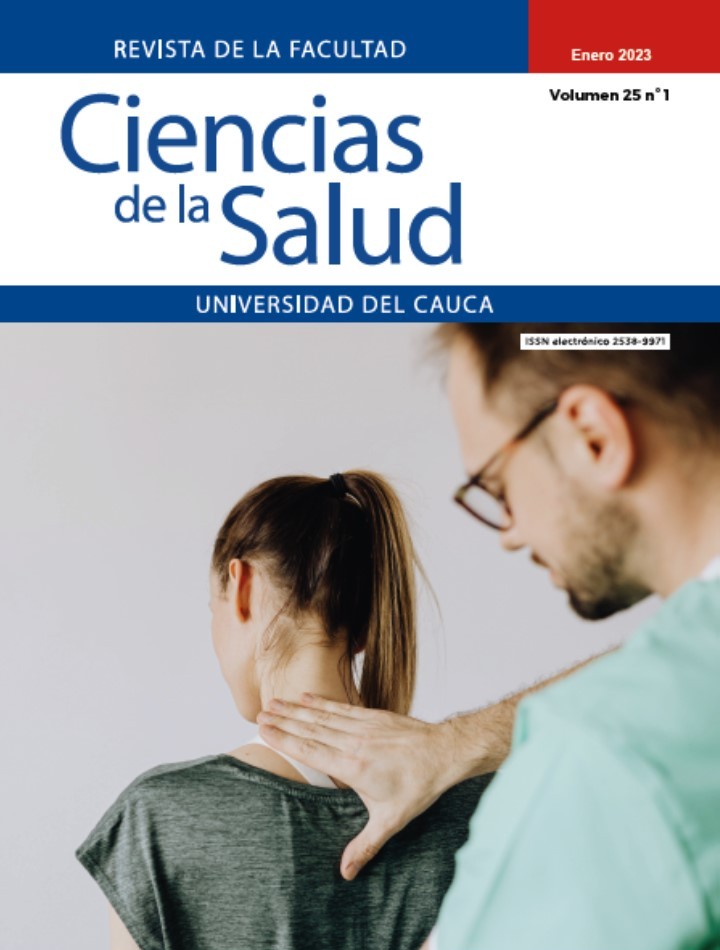Atopic dermatitis in siblings patients: case report and considerations on consanguinity in atopic dermatitis
Abstract
Aim: In this case report, the difference in clinical presentation of atopic dermatitis in two sisters is discussed. We do a brief review of the literature regarding the existing association between siblings and the factors that can influence the characteristics and evolution of the disease.
Case report: A case of atopic dermatitis occurs in two sisters who debut with a similar disease severity but slightly greater and with a different evolution in the younger sister, who did not present an improvement with the initial therapeutic regimen and needed to extend paraclinical tests. An allergic component to metals is observed and it is decided to escalate towards a biological treatment (Dupilumab).
Conclusions: Atopic dermatitis is a disease with heterogeneous clinical and paraclinical manifestations in which multiple intrinsic and extrinsic pathophysiological mechanisms converge. The association between genetic predisposition, heredity, microbiome, and other factors possibly involved in the appearance of atopic dermatitis among affected siblings has not been defined yet. Therefore, it is recommended to carry out studies that assess the importance of this factor and associated variables.
Downloads
Disciplines:
Dermatology, Public HealthReferences
Langan SM, Irvine AD, Weidinger S. Atopic dermatitis. Lancet. 2020;396(10247):345-60. doi: http://dx.doi.org/10.1016/S0140-6736(20)31286-1
Ständer S. Atopic Dermatitis. N Engl J Med. 202;384(12):1136-43. https://doi.org/10.1056/NEJMra2023911
Grettchen FS. Factores Genéticos y Epigenéticos en la Patogénesis de la Dermatitis Atópica. Rev Clin Esc Med. 2018;8(6):37-44. doi: https://doi.org/10.15517/rc_ucr-hsjd.v8i6.36067
Salvati L, Cosmi L, Annunziato F. From emollients to biologicals: Targeting atopic dermatitis. Int J Mol Sci. 2021;22(19). doi: https://doi.org/10.3390/ijms221910381
Sanchez J, Cherrez-Ojeda I, Galvan C, Garcia E, Hernández-Mantilla N, Londoño Garcia A, et al. The Unmet Needs in Atopic Dermatitis Control in Latin America: A Multidisciplinary Expert Perspective. Dermatol Ther (Heidelb). 2021;11(5):1521-40. doi: https://doi.org/10.1007/s13555-021-00595-9
Tokura Y, Hayano S. Subtypes of atopic dermatitis: From phenotype to endotype. Allergol Int. 2022;71(1):14-24. doi: https://doi.org/10.1016/j.alit.2021.07.003
Seegräber M, Srour J, Walter A, Knop M, Wollenberg A. Dupilumab for treatment of atopic dermatitis. Expert Rev Clin Pharmacol. 2018;11(5):467-74. doi: https://doi.org/10.1080/17512433.2018.1449642
Ferreira S, Torres T. Dupilumab para el tratamiento de la dermatitis atópica. Actas Dermosifiliogr. 2018;109(3):230-40. doi: https://doi.org/10.1016/j.ad.2017.10.012
Gooderham MJ, Hong HC, Eshtiaghi P, Papp KA. Dupilumab: A review of its use in the treatment of atopic dermatitis. J Am Acad Dermatol. 2018;78(3):S28-36. doi: https://doi.org/10.1016/j.jaad.2017.12.022
Kamata M, Tada Y. A Literature Review of Real-World Effectiveness and Safety of Dupilumab for Atopic Dermatitis. JID Innov. 202;1(3):100042. doi: https://doi.org/10.1016/j.xjidi.2021.100042
Huerta J, Del Olmo H, Valdés D. Prevalencia y factores asociados a rinitis alérgica y dermatitis atópica en niños. Allergol Immunopathol (Madr). 2008;17(2):54-64. doi: https://www.medigraphic.com/cgi-bin/new/resumen.cgi?IDARTICULO=24118
Dei-Cas PG, Acuña MK, Dei-Cas I. Dermatitis atópica en niños: estudio comparativo en dos grupos etarios. Rev Chil pediatría. 2011;82(5):410-8. doi: http://dx.doi.org/10.4067/S0370-41062011000500006
Khan SJ, Dharmage SC, Matheson MC, Gurrin LC. Is the atopic march related to confounding by genetics and early-life environment? A systematic review of sibship and twin data. Allergy. 201;73(1):17-28. doi: https://doi.org/10.1111/all.13228
Maldonado-Gómez W, Guevara-Vásquez G. Asociación entre presencia de hermanos y dermatitis atópica en un hospital de tercer nivel de atención. Actas Dermosifiliogr. 2022;113(3):322-5. doi: https://doi.org/10.1016/j.ad.2020.05.020
Nance CL, Deniskin R, Diaz VC, Paul M, Anvari S, Anagnostou A. The Role of the Microbiome in Food Allergy: A Review. Child (Basel). 202;7(6). doi: https://doi.org/10.3390/children7060050
Randi G, Altieri A, Chatenoud L, Chiaffarino F, La Vecchia C. Infections and atopy: an exploratory study for a meta-analysis of the “hygiene hypothesis”. Rev Epidemiol Sante Publique. 2004;52(6):565-74. doi: https://doi.org/10.1016/S0398-7620(04)99095-5
Karmaus W, Arshad SH, Sadeghnejad A, Twiselton R. Does maternal immunoglobulin E decrease with increasing order of live offspring? Investigation into maternal immune tolerance. Clin Exp Allergy. 200;34(6):853-9. doi: https://doi.org/10.1111/j.1365-2222.2004.01959.x
Cramer C, Link E, Horster M, Koletzko S, Bauer C-P, Berdel D, et al. Elder siblings enhance the effect of filaggrin mutations on childhood eczema: results from the 2 birth cohort studies LISAplus and GINIplus. J Allergy Clin Immunol. 2010;125(6):1254-1260. doi: https://doi.org/10.1016/j.jaci.2010.03.036
Copyright (c) 2023 Universidad del Cauca

This work is licensed under a Creative Commons Attribution-NonCommercial-NoDerivatives 4.0 International License.












.png)



